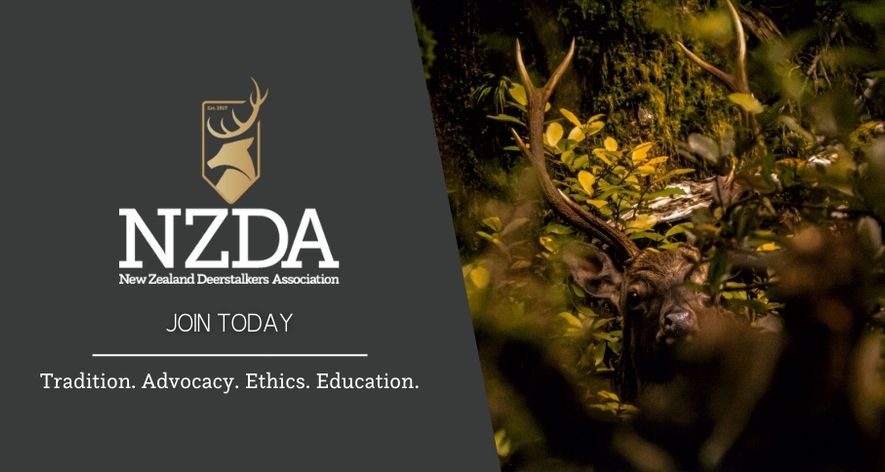Hunting and Wildlife Magazine - Issue 226 - Spring 2024
Words By: John Delury
On 18 September 1999, the Department of Conservation invited interested parties to a meeting at Halfmoon Bay to discuss issues surrounding campsites used by hunters on Rakiura/Stewart Island. John DeLury represented the Southland NZDA Branch, along with representatives from other southern NZDA Branches, charter boat operators, Stewart Island Lions, and local hunters.
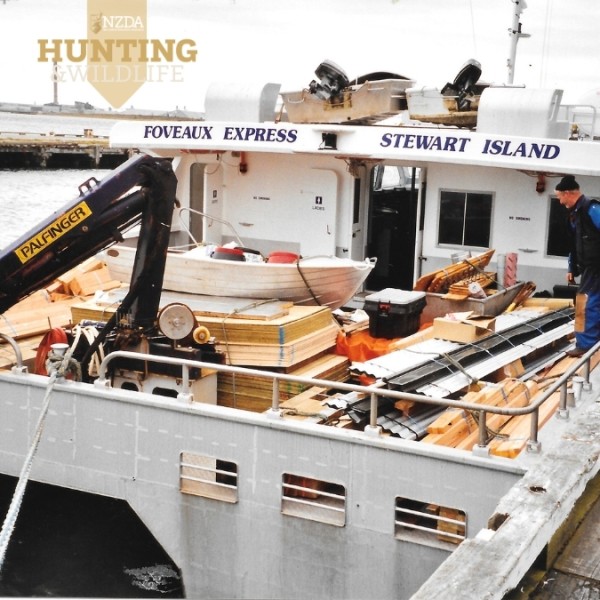
It soon became apparent that DOC favoured establishing a series of three-sided shelters on the campsites. That concept was partly due to the lack of funds and was soon dismissed by hunters. If hunters were to be involved, they saw that nothing less than a vermin-proof hut was required. Three sided shelters already existed on some blocks, and possums and rats were always present. The number of hunters visiting Rakiura/Stewart Island was increasing annually. Site degradation, with trees cut down for improvised shelter, plastic shelters, and rubbish at campsites, was an issue, as was a lack of sanitation.
All NZDA branches were contacted, and it soon became apparent there was sufficient support among hunters to proceed.
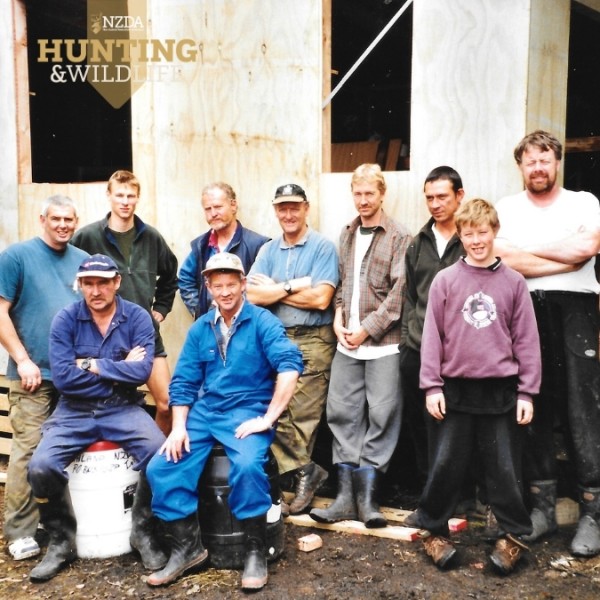
Many hours of discussion and negotiation went into designing a basic hut on the more popular blocks. It was agreed that a hut would be built to an internal measurement of 3.6m x 6m with an additional 2m veranda. The design was simple, with a pitched roof, and it was all based on a sheet of 2.4m x 1.2m plywood. This design was to enable easy construction by volunteers. Each would be fitted with a stainless steel cooking bench and a small pot-belly stove. Capital value could not exceed $5,000, otherwise, DOC would be required to pay an annual levy of 16% . So, we took a few shortcuts by making our own doors from a sheet of plywood, huts were unlined, mattresses would not be supplied, and we scavenged barrels and drums for water. Toilets were made from donated corrugated roofing iron. All huts would be built to code and pass council inspection. Stewart Island charter boat operators, agreed to provide transport, while DOC provided $20,000 of seeding finance spread over two years.
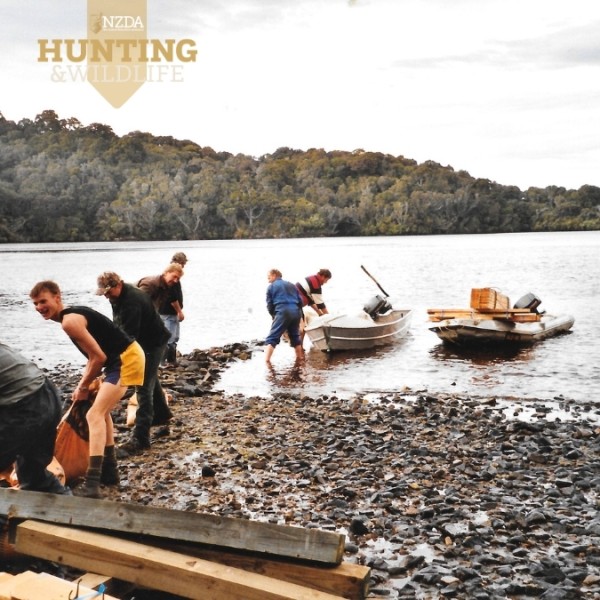
Individual hunters and 11 NZDA branches contributed over $26,000. (Southland $10,330, North Taranaki $3,200, Taranaki $2,750, Gore $1,620, Western Southland, Malvern, Waikato and Wellington $1,000 each, North Canterbury $500, West Coast $250 and Hawkes Bay $51).
In the main, builders came from the Southland Branch, with Gore & Districts, Western Southland, and Taranaki Branches building one hut. The Central Otago Hunting Club (now Upper Clutha Branch) built and funded one hut.
A grant of $30,000 was received from the Community Trust of Southland, and $11,000 was received from Lotteries Community Grants. Rakiura Hunter Camps Charitable Trust was established to receive and raise funds. Initially, trustees were widespread, but it soon became apparent that it would work best if all trustees were based in Invercargill. Stewart Island Lions offered to build the first two huts at Islet Cove and Pegasus Passage as a club project. Eight huts were built in the first year, all of which were transported to blocks by Stewart Island Ferry Service without charge, thanks to the owner, Ian Munro.
Fortunately for the Trust, Ray Phillips owned a rural property on the outskirts of Invercargill. All frames, floor joists and rafters were precut at Ray’s house, and four tonnes of materials, including 100 x 20kg bags of concrete gravel, were shipped for each hut. Subsequently, the team streamlined the operation, which involved completing all pre-cutting, labelling and packing in one day. The floor ply received four coats of polythane, and the interior wall and ceiling ply got two coats of polyurethane. This is just one example of the preparation work that must be completed before the build. Preparation was the key - once you get to the hut site there is no ducking down to the shop for something you have forgotten or overlooked. We estimated that each sheet of plywood was handled at least 14 times from when it left the supplier's yard until the hut was finished. There are 70 sheets of ply, seven of which were 2.7m, and handling them all did become a little tedious.
Without Ray's enthusiasm and practical skills, the project would not be where it is today. Likewise, Ray's wife Karene kept stoppages to a minimum with a supply of smokos, lunches, and drinks every day. The team precut and packed frames and materials before transporting them to Bluff. Karene also helped Ray move ply and do other preparation jobs that needed an extra pair of hands.
Huts were transported to Bluff a few days prior to sailing. Initially, everything was carted there on trailers, but we hired a covered truck once the financial restriction on materials was abandoned. By this time, we were installing a fibreglass Norski toilet, an aluminium door, windows with insect screens, mattresses and a 1000-litre water tank, and huts were now lined. In three years, changes to building code and timber increases had pushed the material costs to over $15k. Around this time, the Trust began upgrading the earlier huts to the current standard. While the Trust had scrimped and saved to meet the DOC restriction of $5k per hut, it was at this time we found that DOC budgeted a hut build cost at $6k per bunk plus labour.
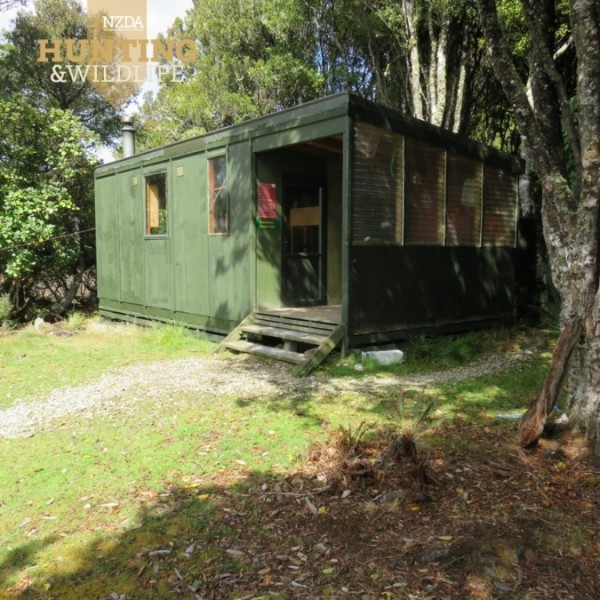
Once at Bluff, Brian from Foveaux Freighter took over, and nothing was a problem for him. Right through to the last hut build, the guys on the Freighter did a wonderful job of ensuring loads got to shore safely.
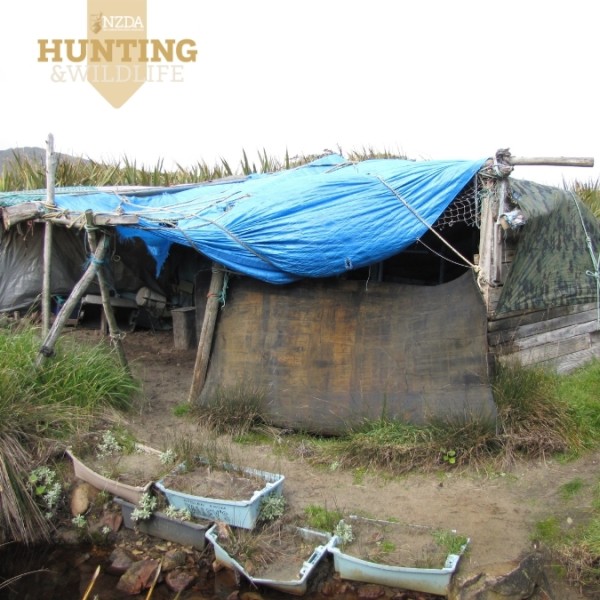 The first eight huts we built were labour-intensive, and all materials were unloaded by hand. We took ten men, and unloading was done in chain gang fashion. This practice became impractical as the sites became further away from the shore. Using a helicopter to ferry material from the freight boat to the site became standard, and we cut the building crew down to six.
The first eight huts we built were labour-intensive, and all materials were unloaded by hand. We took ten men, and unloading was done in chain gang fashion. This practice became impractical as the sites became further away from the shore. Using a helicopter to ferry material from the freight boat to the site became standard, and we cut the building crew down to six.
Once ashore, the building site was pegged out, and the pile holes were dug. The only mixer available was a manual one in a wheelbarrow, and all concreting was done using a dry mix. The target was always to get the piles set on the first day, and on more than one occasion, this meant working way past sunset.
By the end of day two, the aim was to have the floor down, frames up, the roof and the exterior cladding on. The concrete hearth had to be poured for a full day to cure before the fire could be installed.
On day three, the interior ply, bunks, bench, and veranda were fitted and anyone with spare time was tasked with digging the pile holes for the water tank and the two-metre-deep toilet hole. Day four was spent installing the fire, bunk and toilet, and the fifth day was for finishing up, site cleanup and packing.
One of the objectives of the Trust was to have the same facilities at each site, as we knew that some hunters frequent different blocks each year. Having the same facilities contributed to a reduction in surplus gear being taken to campsites. The huts' configuration may differ, but the basics are the same. For this reason, we entered discussions with Rakiura Māori Trust; we also desired to have the same facilities on Māori land blocks. Six huts have been built on Māori land; the owners paid for materials and transport while the time of the Trust and builders was voluntary.
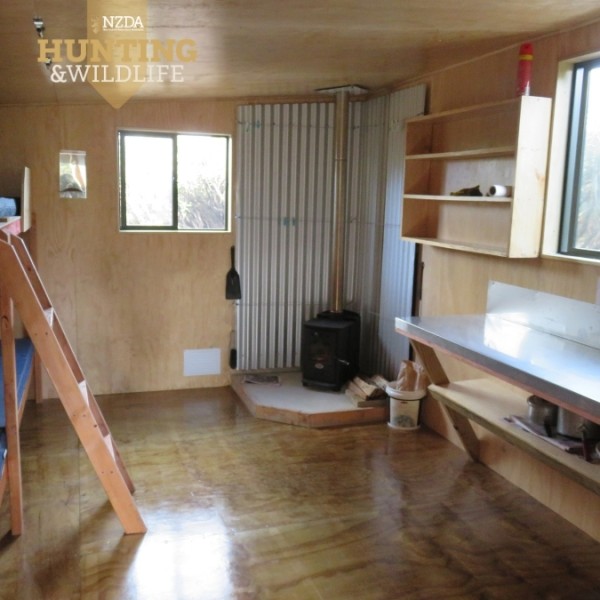
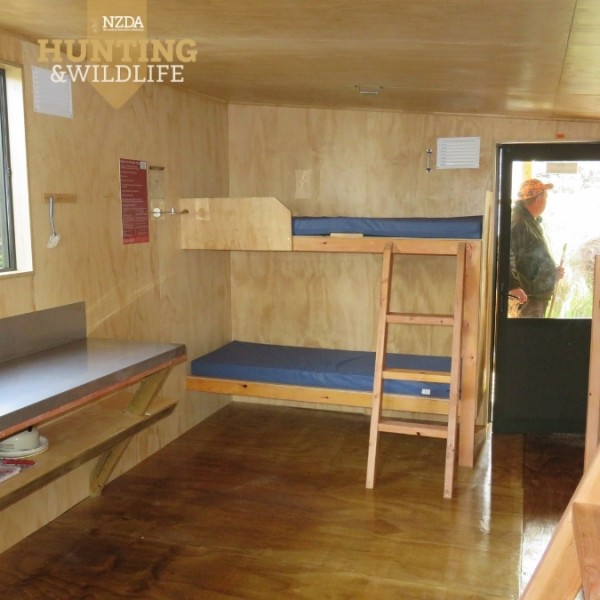
Today, the Rakiura Hunter Camps Charitable Trust (RHCT) owns and manages 18 huts on Public Conservation Land (PCL) under a concession from DOC. We have four Trustees, all members of the Southland Branch. John and Ray have been there since day one, while replacement Trustees Kerry Butson and Dave Howden are both builders.
The Trust cannot operate without funds - hunters pay a levy to stay in huts. To make it simple and avoid non-compliance, the levy is now $30 per person regardless of how many nights they spend at the hut. So, ten nights works out to $3 per night, which hardly covers the cost of the rat poison the Trust provides.
The high transport cost means that the Trust can only check huts once a year. Essentially, these huts belong to hunters, and the Trust relies on hunters to do basic cleaning tasks and undertake maintenance repairs where the Trust asks. This works best if parties contact the RHCT before their hunt. We especially ask that parties not leave their old chairs and other gear behind as each party brings their own. Never leave food behind; if a rat gets into the hut, it will create havoc with leftovers.
Twenty-five years later, record numbers of parties have been hunting Whitetail deer on the Island. In recent years, more family groups are visiting, and it is not uncommon to see two or more families at a Hunter Hut - especially over the summer months. Wives and girlfriends are more inclined to stay in a hut than some of the past camps. Site degradation is now almost non-existent, and rubbish - usually old shelter materials - has been greatly reduced. And, of course, hunters get an extra day hunting without having to put up and dismantle tents and build cooking shelters, plus, they can hunt when it is wet as there is somewhere to dry their gear.
The Trust appreciates the maintenance work some parties carry out at huts. We need hut users to be more proactive with keeping huts in good order. A few hunters are beginning to treat these Hunter Huts as if they have always been there. If they knew the hard work that went into establishing this resource, they might be keen to contribute a little more to the upkeep of huts.
Stewart Island Hunter Huts were built by hunters for hunters, although a few still incorrectly think they are maintained by DOC. For more information on the Trust and individual huts, check out the Rakiura Hunter Camp Trust website: https://www.rhct.org.nz/.
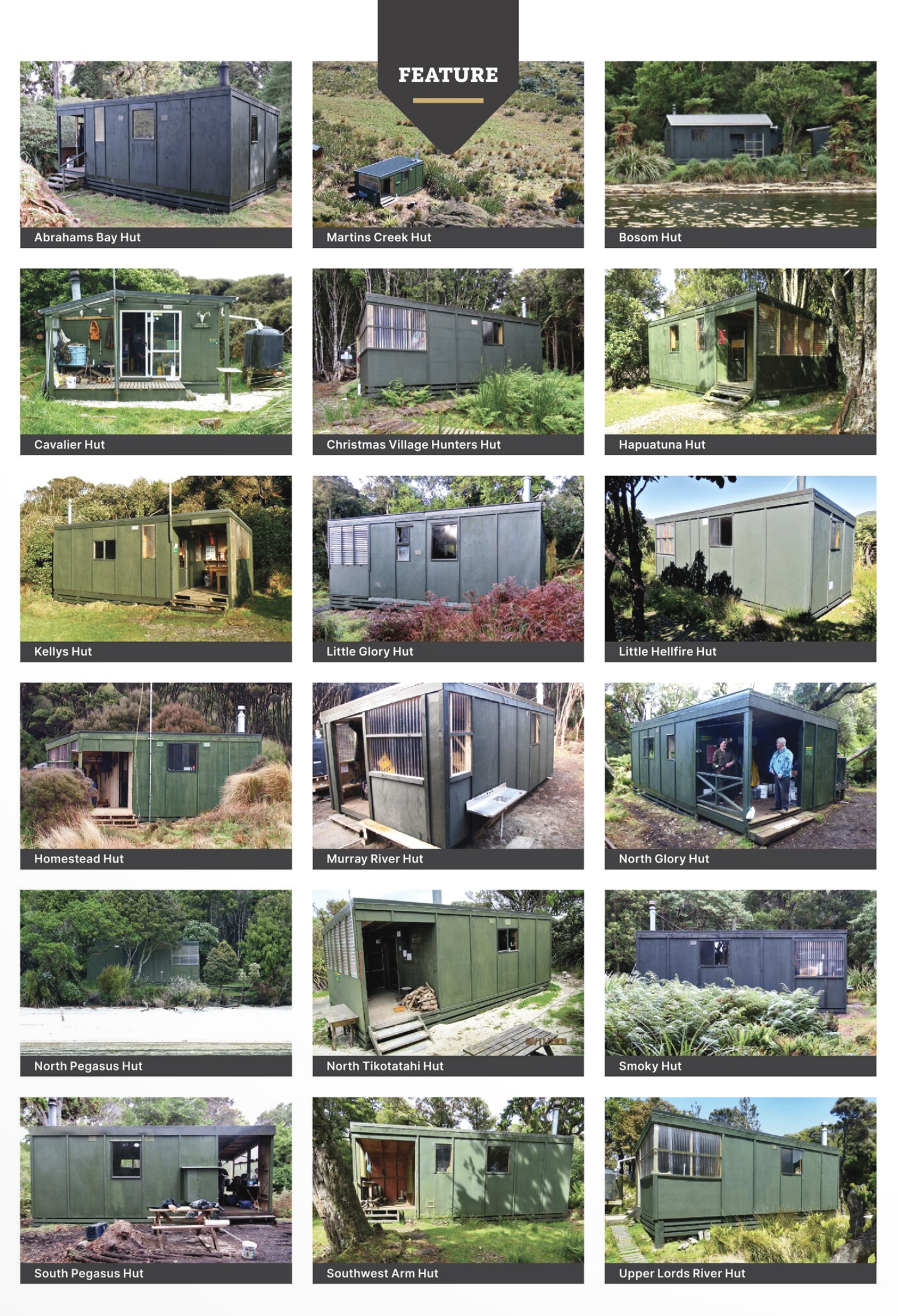
Read Previous Editions Online
Read the historic editions online for free now. Browse here.



